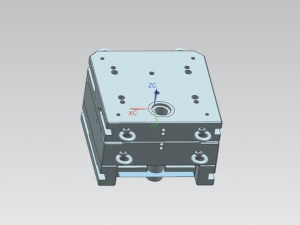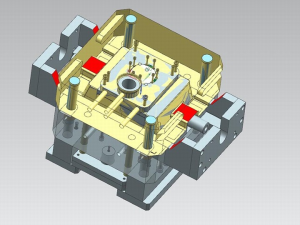For sand casting of precision casting molds: low cost, small batches, complex shapes can be machined, but may require a lot of post-processing skills. There is also investment casting, which is lost wax casting: this processing method has a high degree of continuous inertia and precision , can also be used to process complex shapes. On the basis of relatively low processing cost, it can achieve uniform surface function and is suitable for a variety of products.
Mainly spin casting: this is the best way to machine small parts, often used in jewelry production. Rubber molds can be used to reduce machining costs. Directional solidification is the ability to produce very strong superalloys with fatigue resistance, pouring them into into the mould and then go through a strictly controlled heating and cooling process to eliminate any small defects.
The introduction position of the pouring system has an important influence on the temperature distribution of aluminum alloy precision casting. Adjusting the pouring temperature and pouring speed of the liquid metal can enhance the directional solidification or simultaneous solidification. Set the riser on the thick wall or hot joint of aluminum alloy precision casting. Aluminum alloy precision casting is an effective process method to avoid shrinkage porosity. The comprehensive utilization of risers, fillets and chillers is an effective way to eliminate shrinkage porosity and shrinkage porosity in aluminum alloy precision casting.
The basic principle of aluminum alloy precision casting to avoid shrinkage porosity is to formulate the correct casting process according to the shrinkage porosity of the alloy, so that the aluminum alloy precision casting can establish a significant feeding condition during the shrinkage porosity process, and make the shrinkage porosity as much as possible. Converted to shrinkage cavities, shrinkage cavities appear in the condensation part of aluminum alloy precision castings. In this way, a certain size of riser is placed in the place where aluminum alloy precision castings condense.
Aluminum alloy precision casting makes shrinkage holes concentrated at the riser, or direct gate at the condensation point. In order to establish good feeding conditions for aluminum alloy precision castings during the solidification process, the main reason is to control the solidification direction of the precision casting mold castings. Make it conform to the "directional solidification principle" or the "simultaneous solidification principle".
The second is the injection casting method: it is used for complex shapes with large machining errors. Due to the characteristics of the technology itself, post-processing is not required after the product is formed, but it can only show the advantage of low cost under many production conditions. The die casting method The processing cost is large, and the cost is reasonable only in the case of mass production. However, the product cost is relatively low, and the error is relatively high.





